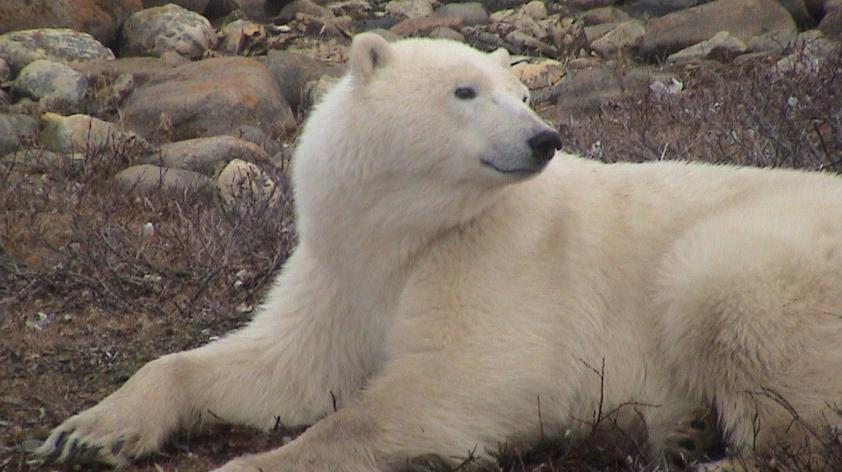
How long can polar bears summer on land?
I just returned from the beaches of Churchill, Manitoba where polar bears spend their summers waiting for the sea ice to return to Hudson Bay. Climate change is causing the Arctic sea ice to break up progressively earlier in the spring and reform progressively later in the fall and winter.
In many areas of the Arctic, this is both reducing the number of seals that polar bears are able to catch and increasing the amount of time polar bears spend on land.
Observations of polar bears on land feeding on birds, eggs, fish, and berries has generated debate about whether such foods could supplement a polar bear’s diet to compensate for lost feeding of seals on the sea ice. In order to understand the consequences of increased land use and whether bears may energetically benefit from foods on land, information on polar bear energy expenditure on land is needed.
Previous studies have tried to estimate polar bear energy expenditure on land based on changes in body weight, body composition, and body temperature data, but to-date no study has simultaneously measured the behavior, diet, and energy expenditure of wild polar bears on land. Such data would help us understand how many calories polar bears may be expending on land and whether bears that feed on land-based diets may energetically benefit.
In 2018 we published a study that documented the behavior, feeding rates, and energy expenditure of wild polar bears on the sea ice. This study found that polar bear energy demands on the spring sea ice are greater than was previously thought, which means that these bears need to be eating more seals than we previously thought.
These bears also showed dramatic changes in their body weight over a short period of time (10 days) with some bears losing as much as 50 lbs (23 kg) or 5 lbs/day. These findings reinforced the reliance these bears have on a diet of fat-rich seals and the consequences that even short-term periods without catching seals can have on polar bear body condition.
This summer, applying the techniques we used on polar bears on the sea ice, I assisted with a new field study on polar bears on land in Hudson Bay.
Polar bears in Hudson Bay have historically come on land in the summer when the sea ice in the bay melts away completely. However, in recent decades the amount of time bears have spent on land in this area when the bay is ice-free has increased by 3 weeks, keeping bears on land for more than 4 months.
Most of these bears are thought to be fasting for the entirety of this 4 month-long period. Measures of polar bear energy demands during this time combined with information on any terrestrial foods being consumed will allow us to understand the ability of these animals to survive for increasing periods on land as is forecasted with continued climate change.













